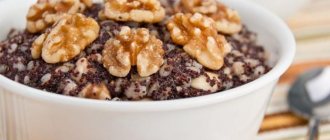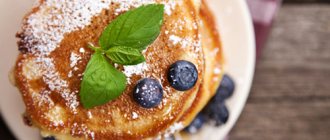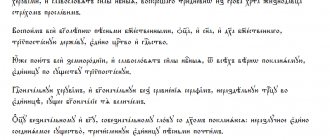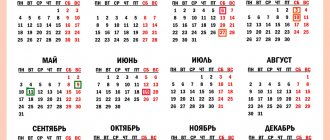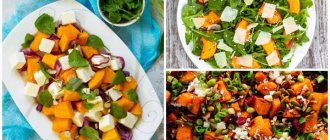50 years after the death of Saint Theodore, Emperor Julian decided to abuse Christians; he ordered his mayor to sprinkle all food supplies. But he only ordered the supplies to be sprinkled with blood sacrificed to idols.
Saint Theodore Tyrone appeared in a dream to Archbishop Eudokius and told him to warn all Christians that all goods that were sold in the markets could not be bought, because they were spoiled by unclean blood. He also told him that they should eat boiled wheat with honey, that is, kutya.
In Orthodoxy we can very often hear such a word as “kolivo”. What is it? What does it mean, what is it for? Kolivo is a special funeral dish in Orthodox churches.
Kolivo is a special funeral dish that is used in all Orthodox churches. It is prepared from whole wheat grains with the addition of nuts, dried fruits and honey.
What is it? This is porridge cooked from whole wheat grains, poured with honey, with the addition of various dried fruits and nuts. In the photo below you can see what this dish looks like.
In some places on the right bank of Ukraine there is pea porridge, and in Romania there is grain bread. This dish is served at a funeral dinner after a funeral.
Kutya is brought to the temple for the funeral table after the blessing it can be eaten
Kutya is brought to the temple in memory of deceased Christians, which is placed on the funeral table with a lit candle. It marks the unfading light of eternal life.
The priest blesses the kutia during the funeral service, and then this kutia is eaten at the funeral table with prayerful remembrance of the deceased. Kutya is eaten before regular food.
Before eating kutya or kolivo, it must be brought to the temple and placed on the funeral table. A lit candle is usually placed in kutya. After the funeral service, which the priest serves, he blesses the food. Only after this can kutya and kolivo be eaten by all relatives for the deceased servant of God
What do the ingredients that are in the kutia mean? Wheat and rice mean that the dead will be resurrected, just as grain rots in the ground, which then bears abundant fruit.
But honey signifies the sweetness of the eternal blessings of the Kingdom of Heaven. Also, kutya brought to the temple can be left on the funeral table, so that those who prayed for the deceased can eat it.
Folk traditions associated with Sochivo
The main Christmas dish, filled with symbols, is associated with many folk traditions.
- During the holiday, the owner of the house took a full spoon of sochiv and threw it to the ceiling. All family members carefully counted the grains stuck to the top. The more grains left on the ceiling, the richer the harvest will be. Each grain stuck to the ceiling is a symbol of the sheaf that God will give in the coming year.
- Spikelets placed under a bowl of koliv were considered a talisman for the home. They were kept for a whole year, until the next holidays.
- Some owners believed so much in the healing power of soch that they fed it to their pets so that they would get sick less and give good offspring.
- At night, a little kutya was left on the table in memory of deceased relatives.
- Children always took kolivo in the evening to their grandparents living separately and to their godparents.
More recipes for Orthodox cuisine:
- Lenten baking recipes
- Lenten pancake recipes
- Recipes for Easter cakes and Easter cakes
The recipe for kutya and koliv is quite simple
The recipe for any kutia and koliv is quite simple. Let's look at the simplest manufacturing recipes.
Kutya recipe:
First you need to take the necessary ingredients. For the funeral kutia you will need:
- 1 cup rice;
- 100 grams of raisins;
- 100 grams of honey.
Preparation: Rice must be cooked until completely soft. Separately, you need to boil the raisins (it is advisable to take them without seeds). Then combine the cooked raisins with rice and mix well. Honey can be diluted with a small amount of water and then added to kutya. Afterwards mix it all well. Kutya is ready!
In this image we see what cooked kutia looks like with the addition of poppy seeds, walnuts and honey. Quite quick and easy to prepare
Coliva recipe:
Kolivo can be prepared in two ways:
- From wheat;
- From rice.
To prepare wheat coliva you will need:
- 1 cup wheat grains;
- 100 grams of poppy seeds;
- 100 grams of nuts;
- 1-3 tablespoons of honey.
Preparation: First you need to boil the wheat grains. Afterwards it is cooled. Separately, you need to grind the poppy seeds until you get poppy milk. Honey is added to the resulting milk of poppy seed. All this is mixed and then added to the cooked and cooled wheat. If the porridge turns out to be too thick, you can add a little boiled water to it. At the end, crushed nut kernels are added. (walnuts are often used).
In this image, we see prepared kolivo from wheat grains with poppy seeds, with the addition of raisins, walnuts and honey.
To prepare koliva from rice you will need:
- 1 cup rice;
- 100 grams of poppy seeds;
- 100 grams of nuts;
- 50 grams of dried fruits;
- 100 grams of honey.
Preparation: Cooking koliva from rice is the same as from wheat. Just first you need to cook the rice thoroughly until it is completely soft. After cooking, cover the rice with a tight lid and leave for 12 minutes to allow the rice to steep. Then add everything from the list. Sometimes raisins are not added to rice kolivo, but various types of dried fruits are added.
Kolivo made from rice with the addition of raisins, honey and other dried fruits
Kolivo is also made from lentils and barley. But this is a choice for everyone, who likes it as they like. You can prepare kolevo from any grains at your discretion.
In a general sense, we see that this is a meager food that is prepared only from grains.
Kolivo is brought to church in memory of the miracle of the martyr Theodore Tiron
When is kutya and kolivo cooked? Kutya is cooked on Christmas Eve. And Kolivo is on Friday of the first week of Lent.
It is brought to church, as in the memory of the miracle of the Great Martyr Theodore Tiron. What kind of martyr was this and why did they start making kolivo and kutya in his honor?
The holy martyr Theodore was a warrior. He served under the command of a certain Vring. This martyr was forced to sacrifice to idols, but Saint Theodore firmly declared that he professed only faith in Christ. Then, having learned about this, the boss gave him several days to think about it. At the same time, Saint Theodore prayed intensely.
He was accused of setting fire to a pagan temple, and for this he was thrown into prison to starve to death. It is believed that it was there that Our Lord Jesus Christ Himself appeared to him. He consoled the saint and strengthened him.
The holy martyr Theodore Tyrone was accused of setting fire to a pagan temple, and also of openly professing faith in Christ. Kolivo is brought to church as a memory of the miracle of the Great Martyr Theodore Tiron
When the holy martyr Theodore was again brought to the ruler, he confessed his faith in the same way, for this he was given over to torture and was condemned to be burned. The martyr Theodore, without any trepidation, went to the fire and, with prayer and praise, gave up his holy soul to God. This happened in 306 under the Roman Emperor Gallery.
The body of Saint Theodore Tyrone was completely undamaged by the fire.
Subsequently, his relics were transferred to Constantinople to the temple, which was consecrated in honor of him. Its holy head is in Italy.
The body of the martyr Theodore Tiron was completely undamaged after the fire. Then it was clear that it was imperishable. In this photo, we see the head of the holy martyr Theodore Tiron, who is currently in Italy
At the same time, Saint Theodore appeared in a dream to Archbishop Eudokius and told him to warn all Christians that all goods that were sold in the markets could not be bought. He also told him that they should eat boiled wheat with honey, that is, kutya.
It is in memory of this event that the Russian Orthodox Church annually celebrates the Holy Great Martyr Theodore Tiron on Saturday of the first week of Lent.
On Friday, on the eve of Saturday, at the Divine Liturgy of the Presanctified Gifts, the prayer and canon to the Holy Great Martyr Theodore, which were compiled by the Monk John of Damascus, are read.
So in the church, after the Divine Liturgy, kolivo is distributed to all parishioners, in honor of the day of remembrance and the miracle that the holy martyr Theodore Tiron performed
After this, the kolivo is blessed by the priests and distributed to the believers. People take it home and share it among the whole family, so that at least a small particle of this food leaves a mark on our souls and hearts.
And also everyone should pray together and glorify the great martyr Theodore Tiron. It is from here that the appearance of kutya and koliva is considered to be true.
What are we going to draw with?
When you see the face of a saint or an intricate ornament on the surface of a finished koliva, you can’t wrap your head around: how can you create such beauty? Not everyone can depict this with a pencil and paints, but here in general... How, by the way, is all this done?
Drawing is truly the most difficult part of the work. It must comply with Orthodox canons and traditions. It is allowed to add an ornament to the image, which makes it possible to use more colors in the design.
“At first I had one decoration technique - painting with dyes on glaze,” says Father Victor. “But it took a lot of time, 7-8 hours.” Then I learned that on Athos they use colored sugar to create designs. I tried it, but it turned out to be inconvenient to work with, because the crystals are large - you can’t make small parts from them. On Mount Athos, the food is served in large dishes, and the details are correspondingly larger. As color ingredients, I began to use ground poppy seeds, cocoa powder, and spices with a mild taste - sweet paprika, for example. But the moment came when these flowers were no longer enough, and some kind of alternative was needed. So I moved on to colored breadcrumbs. Using food coloring you can create a huge range of colors. I also use natural dyes: for example, I get black from cuttlefish ink.
In Victor’s father’s workshop there are a lot of jars with crackers of different colors - really, you can paint a picture. He prepares edible “paints” in advance. The process is simple: take a loaf of wheat bread, cut off the crust on all sides so that it does not add an additional tone. Cut into small cubes and dry until fully cooked. Then we dilute the food coloring of the desired color in water and immerse the crackers in it. Having painted the crackers in different colors, we dry them again and grind them through a meat grinder into fine crumbs - each color separately. Sift through a fine sieve and pour into containers. Rusk powder should not be stored for very long, as it may go rancid.
“Any person can prepare and decorate kolivo, even those without artistic skills,” explains Father Victor. “The main thing is to be able to hold a pencil and ruler in your hands and be ready for painstaking work.” When I first started doing koliv, I decided to never repeat myself in my drawings. So far it's working. Usually images come to my mind on their own - then I sit down and start drawing. As a rule, this is a cross with some kind of ornament or the face of a saint. Some people are wary of the fact that a saint is depicted on the koliva. But that's the tradition. On Mount Athos, in monasteries, saints are depicted on the koliva very often, and this does not bother anyone.
After the image is invented and transferred to paper, a stencil is made. A circle with a carved cross is placed on the surface of the koliva, and the uncovered space is covered with colored crackers. The rest of the details are applied to the surface of the coliva in the same way.
“The colors should be harmoniously combined with each other,” continues Father Victor. “I try to focus not on the color, but on the plot.” In addition to colored crackers, kolivo can be decorated with any nuts, pomegranate seeds or peeled pumpkin seeds. But, I repeat, this is not a confectionery product, so you shouldn’t add candied fruits, marmalade, or chocolate - this is already too much.
Consecration of kutya and koliva at home is impossible
Many people often ask how to consecrate kutya at home? In fact, kutia and kolivo are not consecrated by people at home. It can only be consecrated by a priest by reading special prayers from the psalter.
If you need to consecrate the kutya, then it would be best to take it to the temple. There the priest will perform a memorial service for your deceased, after which he will bless the kutya. Only then can you take her home.
By leaving a comment, you accept the user agreement
